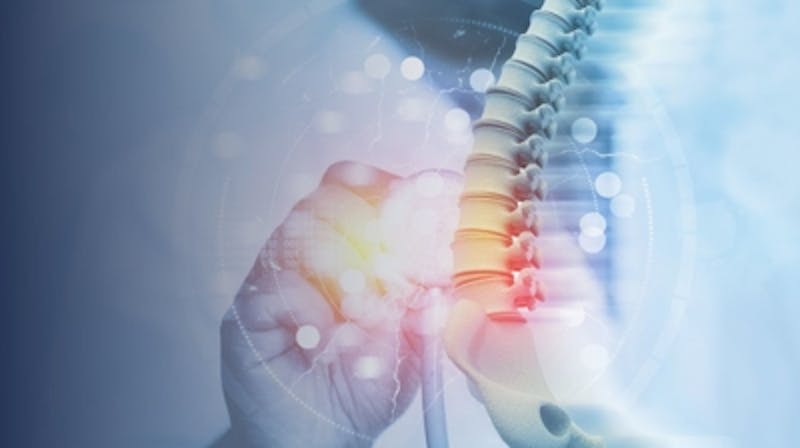
Understanding Catastrophic Injuries and Their ImpactDefinition and Severity of Catastrophic Injuries
Catastrophic injuries stand apart in their ability to fundamentally alter an individual's life. These are injuries that inflict severe damage to the spine, spinal cord, brain, or skull, often leading to permanent disabilities, long-term medical conditions, or a significant decrease in life expectancy. The severity of these injuries cannot be overstated; they often require extensive medical treatment, multiple surgeries, and can lead to secondary health issues such as chronic pain or infections. Understanding what constitutes a catastrophic injury is crucial, as it shapes the approach to treatment, rehabilitation, and legal action. It's a term that carries weight, signaling a need for comprehensive support systems for those affected.
Life After a Catastrophic Injury
The journey following a catastrophic injury is fraught with challenges that extend beyond the physical. Survivors often face a gauntlet of medical complications, requiring a level of care that can be both exhaustive and exhaustive. Rehabilitation becomes a new constant, as individuals work to regain as much independence as possible. Yet, the need for long-term care is a reality for many, placing emotional and financial strain on both the survivors and their families. The impact is multidimensional, affecting mental health, personal relationships, and the ability to work. Life after a catastrophic injury is a testament to resilience, but it also highlights the critical need for a supportive network and resources to navigate this new reality.
Major Types of Catastrophic Injuries
Traumatic Brain Injuries (TBI)
Traumatic Brain Injuries (TBI) represent some of the most insidious catastrophic injuries due to their often invisible yet profound impact. TBIs can result from a sudden jolt or blow to the head, disrupting normal brain function. Symptoms can range from mild, such as concussions, to severe, leading to long-term cognitive, emotional, and physical impairments. The effects of a TBI can ripple out, affecting every aspect of a survivor's life, necessitating immediate and ongoing medical treatment. It's a condition that underscores the fragility of our most vital organ and the importance of protecting it. With TBIs, the path to recovery is uncertain, and each step forward is a victory in itself.
Spinal Cord Injuries and Paralysis
Spinal cord injuries can be devastating, potentially resulting in partial or complete paralysis. The level of injury is critical; it determines the extent of impairment and the prognosis for recovery. These injuries can disrupt the communication between the brain and the body, leading to loss of mobility and sensation below the injury site. The implications for independence are significant, often necessitating modifications to living spaces, vehicles, and daily routines. The pursuit of independence becomes a central theme in the lives of those with spinal cord injuries, with advancements in medical technology and rehabilitation offering hope and improved quality of life.
Amputations and Loss of Limbs
Amputations, the surgical removal of a limb or extremity, can occur as a result of traumatic injuries or medical complications. The loss of a limb is a life-altering event, carrying with it not only physical challenges but also profound psychological implications. Individuals must navigate a new reality, learning to adapt to the absence of a part of their body that once played a crucial role in their autonomy. However, the human spirit is resilient, and with advancements in prosthetic technology and physical therapy, many amputees regain a remarkable level of function and independence. The journey is as much about healing the body as it is about redefining one's sense of self in the wake of such a significant change.
Primary Causes of Catastrophic Injuries
Motor Vehicle Accidents
Motor vehicle accidents are a leading cause of catastrophic injuries, often due to the high-speed impacts and forces involved. When vehicles collide, the human body is subjected to rapid deceleration and trauma, which can result in severe injuries to the occupants. Safety features such as seatbelts and airbags have undoubtedly saved lives, but they are not failproof. The statistics paint a sobering picture, highlighting scenarios where catastrophic injuries are most likely to occur, such as head-on collisions or rollovers. Understanding these risks is crucial for prevention, but for those already affected, it underscores the importance of seeking expert legal and medical support.
Workplace and Industrial Accidents
The workplace, particularly in industries like construction, manufacturing, and mining, can be a hotspot for catastrophic injuries. Despite rigorous safety regulations, the combination of heavy machinery, high places, and hazardous materials creates an environment where accidents can have severe consequences. These incidents not only disrupt the lives of workers and their families but also raise questions about workplace safety practices and training. It's a reminder that safety is an ongoing commitment, necessitating vigilance, education, and a culture that prioritizes the well-being of every employee.
Sports and Recreational Activities
Sports and recreational activities, while promoting health and enjoyment, also come with inherent risks of catastrophic injuries. High-impact sports such as football, rugby, and extreme sports are particularly notorious for the potential of severe injuries. The debate over safety protocols and the use of protective gear is ongoing, as the community seeks a balance between preserving the essence of the sport and ensuring the safety of its participants. The conversation is complex, involving athletes, coaches, medical professionals, and sports organizations, all vested in finding solutions that will minimize the risk of life-altering injuries while maintaining the competitive spirit of sports.
Prevention and Safety Measures
Implementing Safety Protocols
The implementation of safety protocols is a critical step in preventing catastrophic injuries. Whether in the workplace, on the road, or in sports arenas, well-designed safety measures can significantly reduce the risk of severe harm. These protocols often stem from a combination of past experiences, research, and technological advancements, aiming to create environments where safety is the default, not an afterthought. Examples of successful measures include the enforcement of speed limits, the use of personal protective equipment, and the adoption of industry-specific guidelines. The effectiveness of these protocols is not just in their creation but in their consistent application and the commitment to continuous improvement.
Advances in Protective Technology
Technological innovation has been a game-changer in the realm of protective technology. From cutting-edge helmet designs that reduce the impact of collisions to advanced safety systems in vehicles that prevent accidents before they happen, these technologies are making a tangible difference. In sports, for example, the development of better padding and protective gear has been instrumental in reducing the incidence of catastrophic injuries. Similarly, in industrial settings, automation and robotics are taking over tasks that pose high risks to human workers. The advancements in protective technology not only safeguard individuals but also foster a culture where safety is an integral part of progress.
Education and Awareness Campaigns
Education and awareness campaigns play a pivotal role in the prevention of catastrophic injuries. By informing the public about the risks associated with certain activities and the importance of safety measures, these campaigns can alter behaviors and save lives. Community outreach programs, national safety campaigns, and even social media initiatives have the power to spread critical information quickly and widely. They empower individuals with the knowledge to make safer choices, whether it's wearing a helmet while riding a bicycle or understanding the dangers of distracted driving. Education is a powerful tool in the fight against catastrophic injuries, and its impact is felt across communities and generations.
Legal and Financial Considerations
Navigating the Legal System
For victims of catastrophic injuries, navigating the legal system can be a daunting prospect. Yet, it is a necessary step in securing the compensation and support needed for recovery and adaptation to a new way of life. Personal injury claims and workers' compensation cases are complex, often requiring the expertise of seasoned legal professionals. Understanding one's rights and the intricacies of the law is crucial for a fair outcome. Law firms specializing in personal injury, like 'MAGGIO LAW in Jackson, MS, are invaluable allies for survivors, guiding them through the legal maze and advocating on their behalf.
The Cost of Catastrophic Injury Care
The financial burden of catastrophic injury care is staggering. From the initial emergency services to ongoing rehabilitation and potential long-term care, the costs can quickly become overwhelming. Medical bills, rehabilitation costs, specialized equipment, and home modifications contribute to a financial toll that few are prepared for. It's a reality that underscores the importance of comprehensive insurance coverage and a clear understanding of what expenses may arise. For many, the financial implications of a catastrophic injury are as life-changing as the physical ones, affecting not just the survivor but their entire family.
Insurance and Financial Support Options
Navigating the aftermath of a catastrophic injury often involves understanding the various insurance and financial support options available. Insurance coverage is the first line of defense, providing necessary funds for medical treatment and rehabilitation. However, policies vary, and it's crucial to understand the specifics of what is covered. Government assistance programs can offer additional support, as can charitable organizations dedicated to helping those with severe injuries. For those in Jackson, MS, seeking guidance on these matters, local law firms like 'MAGGIO LAW can provide invaluable assistance, ensuring that survivors and their families receive the support they need to move forward.
'MAGGIO LAW Understands Catastrophic Injuries
If you or a loved one has suffered a catastrophic injury, know that you are not alone. 'MAGGIO LAW is dedicated to helping individuals navigate the complex legal and financial landscape that follows such life-altering events. Our experienced team understands the challenges you face and is committed to advocating for your rights and securing the compensation you deserve.
Contact us online or call (601) 265-6869 to learn more about how we can support you on your journey to recovery and justice.

